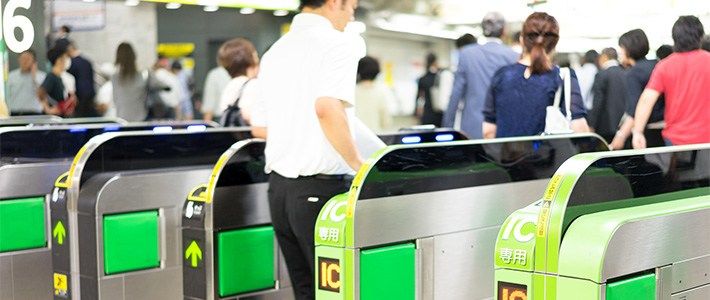
Shinjuku Station is Enormous! Daily Passengers Equivalent to Population of Yokohama
Society- English
- 日本語
- 简体字
- 繁體字
- Français
- Español
- العربية
- Русский
An endless succession of trains glides into Shinjuku Station, spilling passengers out onto platforms and picking up new riders before setting forth for their next stops. The bustle of this transport hub is the raw vigor and energy of the city itself. Tokyo’s central loop, the Yamanote Line, dominates lists published by the capital’s rail companies of the stations with most commuters passing through. Among these, Shinjuku has been recognized by the Guinness Book of Records as the world’s busiest station.
Five rail operators serve Shinjuku: JR East, Keiō, Odakyū Electric Railway, Tokyo Metro, and Toei Transportation. Their lines connect to bedroom communities in western Tokyo, the northwest of Kanagawa Prefecture, and the south of Saitama Prefecture. The crush of commuters is most intense during the morning and early evening rush, but the station is crowded throughout the day.
Shinjuku's JR East section alone has 16 platforms including those for the Yamanote Line, Saikyō Line, Shōnan Shinjuku Line, Chūō Rapid Line, and Sōbu Line, and is used by 1.56 million passengers per day. Combined with the number of passengers from the other four operators, 3.53 million people pass through daily, which is comparable to the population of Yokohama. It is like an entire city contained within a single train station.
Number of Daily Passengers at JR Shinjuku Station by Operator
| JR East | 1,557,236 |
| Keiō | 786,052 |
| Odakyū Electric Railway | 506,229 |
| Tokyo Metro | 236,657 |
| Toei Transportation | 444,420 |
| Total | 3,530,594 |
| Population of Yokohama | 3,740,617 |
Compiled by Nippon.com based on materials published by the railway operators. The JR figure for boarding and alighting passengers at Shinjuku is estimated by doubling the company’s published data on the number of boarding passengers. Seibu-Shinjuku Station (Seibu Railway) and Shinjuku-Nishiguchi Station (Toei), which are connected to Shinjuku Station by an underpass, are not included in the tally.
Passengers are only counted each time an automatic ticket gate is used, so even if passengers transfer from JR East’s Chūō Line to the Yamanote Line at Shinjuku Station, they are not counted as transiting passengers as there are no ticket gates between their transfers. Conversely, if passengers switch from the Odakyū Line to the JR Line at Shinjuku Station, they are counted twice (once for each company they used). For this reason, it seems that a greater number of commuters are counted at terminal stations used by more than one railway company, and this makes it difficult to accurately calculate the actual number of commuters for each station.
Tokyo Station, the gateway to the east of the metropolis, has to content itself with fourth place in number of commuters, according to figures published by railway companies. It is thought that this is due to its having only two operators (JR East and Tokyo Metro) with lines passing through, so many of its transferring passengers transfer within JR East and do not use ticket gates.Japan’s Top 10 Stations by Number of Passengers
| Number of Daily Passengers | Station | |
|---|---|---|
| 1 | 1,557,236 | Shinjuku (JR East) |
| 2 | 1,163,469 | Shibuya (Tōkyū) |
| 3 | 1,133,032 | Ikebukuro (JR East) |
| 4 | 905,098 | Tokyo (JR East) |
| 5 | 863,086 | Osaka (JR West) |
| 6 | 840,384 | Yokohama (JR East) |
| 7 | 786,052 | Shinjuku (Keiō) |
| 8 | 757,132 | Shinagawa (JR East) |
| 9 | 741,338 | Shibuya (JR East) |
| 10 | 568,316 | Ikebukuro (Tokyo Metro) |
Compiled by Nippon.com based on materials published by the railway operators. JR figures for boarding and alighting passengers are estimated by doubling the company’s published data on the number of boarding passengers. JR West data is for 2016, while all others are for 2017.
(Translated from Japanese. Banner photo © Pixta.)